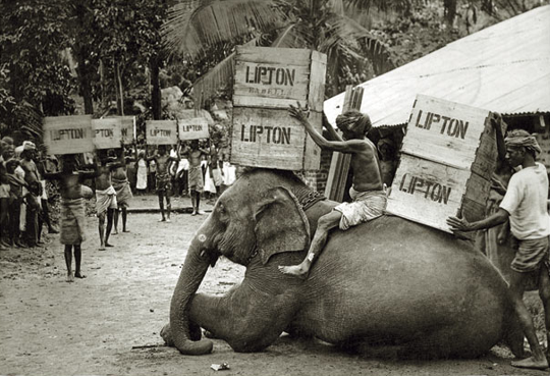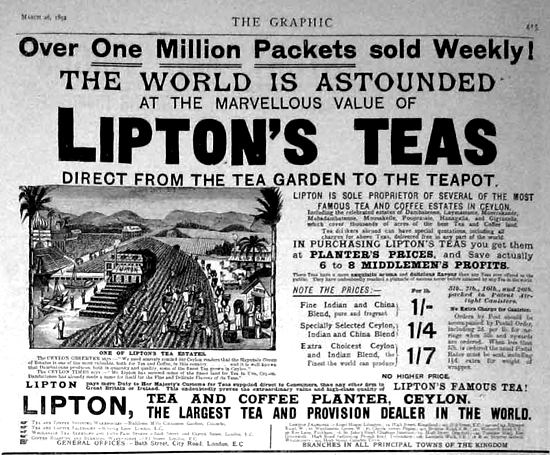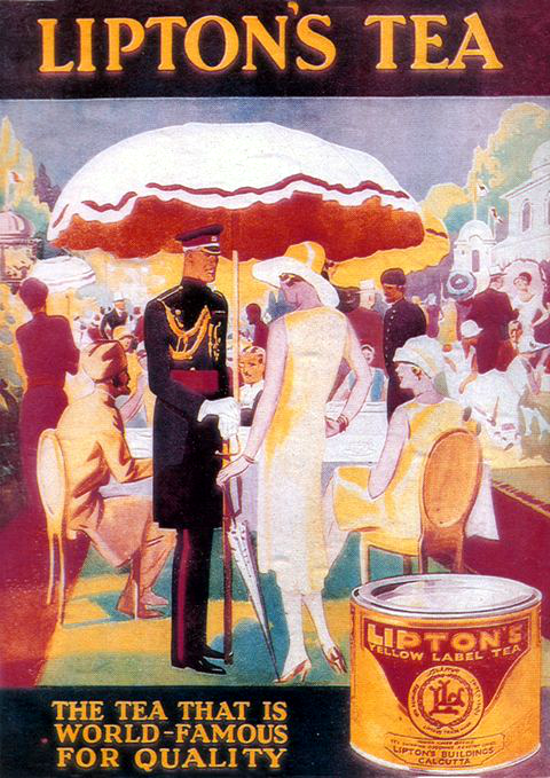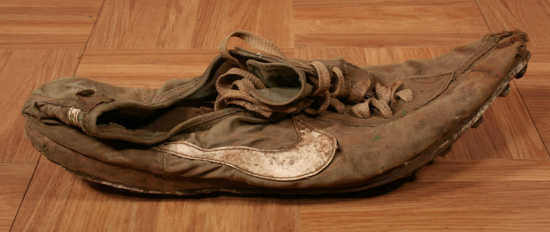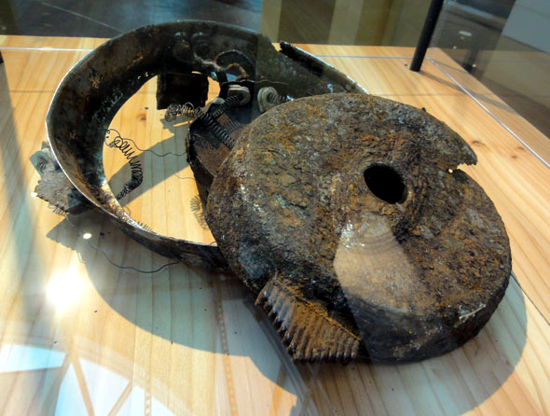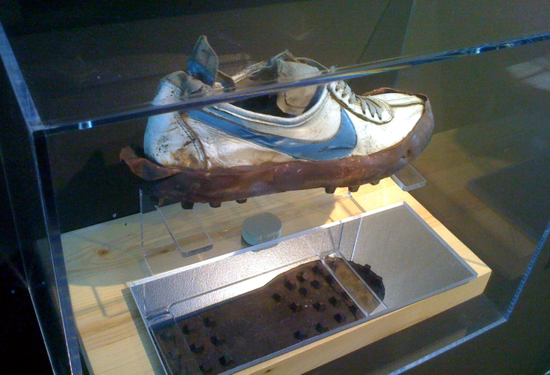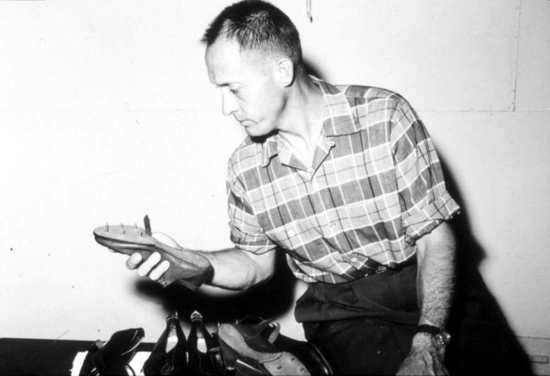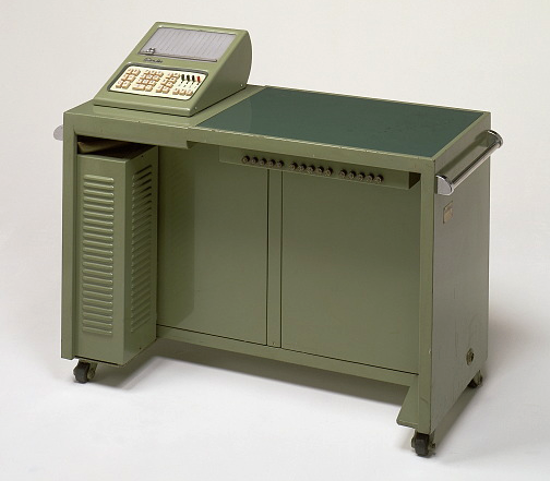 |
| Pampers logo 1961 |
Name: "Pampers"
Category: Health
Subcategory: Baby products
Inventor: Victor Mills
Producer: P&G - Procter & Gamble Co. (founded by William Procter and James Gamble on October 31, 1837)
Production start: 1961 - Peoria, Illinois, USA
First price: 10 cents per diaper in 1961, 6 cents in 1964.
Features: Victor Mills is recognized as the most productive and innovative technologist at Procter & Gamble. In 1955, he disliked changing diapers on his first grandchild: consumers weren't happy with cloth diapers and wanted a better way of diapering; baby wetness and laundry problems associated with cloth diapers were also present in hospitals, so the medical profession was interested in an improved diapering system. Mills saw the opportunity and assigned researchers in Procter & Gamble Exploratory Division to look into the possibility and practicality of a diaper that was absorbent, prevented leaks and kept babies dry - and could be discarded after each use. Beginning in 1956, this collaborative effort resulted in the development of the first Pampers. The first diapers were tested in Dallas, Texas in 1957. Two versions were tested - pin-on and tape-on. They were disposable paper liners that fit inside plastic pants, but they proved to be too hot. A home economist, Norma Baker, was also hired to test the diapers locally. She would talk to mothers and find out what they liked and didn't like. Others on the diaper development team also tried out the product, including Bob Duncan on his twins. Norma Baker and Bob Duncan are the Pampers patent holders.
Interesting facts: 37,000 diapers were hand-sewn for the Rochester, NY test market in 1959. The first machine-made product was test marketed in Peoria, Illinois, in 1961, the year Mills retired. The diaper was available in 2 sizes and the average price was 10 cents each; consumer feedback was that the diapers were too expensive for everyday use. To reduce the cost of each diaper, Procter & Gamble's engineering and manufacturing groups sought ways to produce at higher speeds and greater efficiencies. The result? Pampers, which offered a complete replacement for both cloth diapers and plastic pants, at a price parents could afford on a regular basis. In 1966 Pampers launched a "wingfold" design and by 1969 started a "third size". Procter and Gamble replaced the pin-on design with tapes in 1971. The name "Pampers" was coined by Alfred Goldman, Creative Director at Benton & Bowles, the first ad agency for the account.
Slogan (1961): «Instead of a DIAPER... Pampers»
Property: Procter & Gamble Co.
Official website: http://www.pampers.com
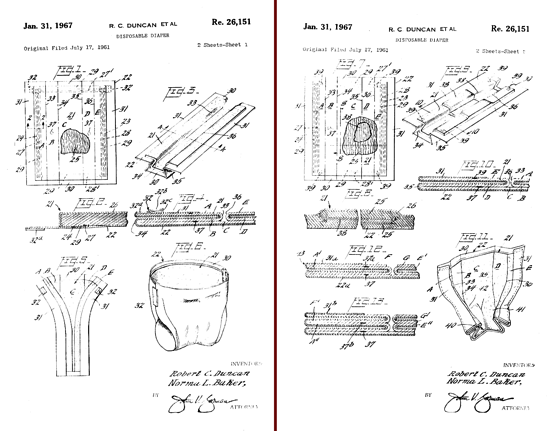 |
| Figure from Patent granted to Robert C. Duncan and Norma L. Baker, members of the Pampers development team (Jan. 31, 1967, original filed July 17, 1961) |
 |
| Pampers, earliest diapers package (1961) |
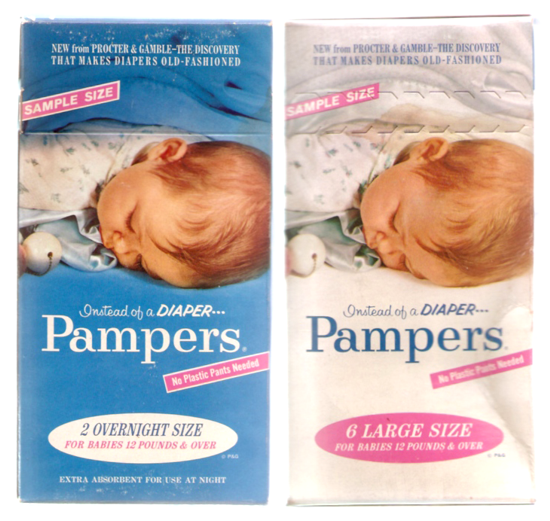 |
 |
| Pampers, some early packaging formats (1960s) |
Pampers, first diapers in a short commercial video (early 1960s) |
 |
| Pampers advertising (1967) |
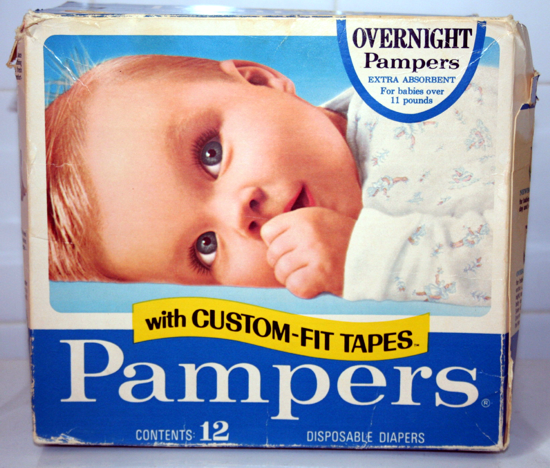 |
 |
 |
| Pampers, the adhesive tapes rolled out replacing diapers pins (1971) |
 |
| Pampers advertising (1974) |
 |
| Victor Mills (Milford, March 28, 1897 - Tucson, November 1, 1997), the chemical engineer who created Pampers diapers. His work included development on Ivory soap, Crisco, Duncan Hines, Jif and Pringles. Victor Mills contributed to P&G's 1995 National Medal of Technology Award. |
 |
| Pampers become Procter & Gamble's first $10 billion brand (2012) |




